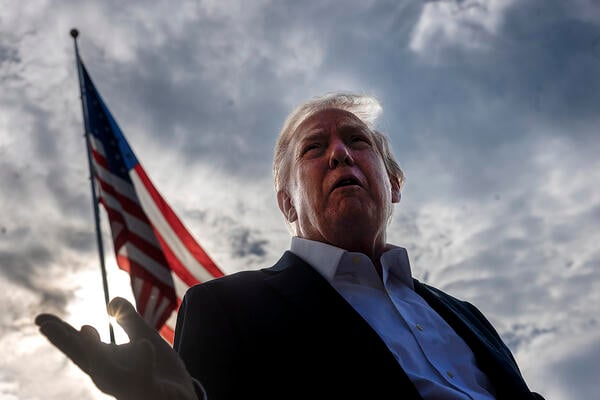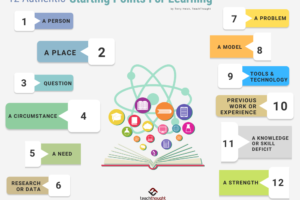
College Presidents Guarded Under Fire
NEW YORK—Nine months into Donald Trump’s second term, in a year marked by unprecedented federal intervention in higher education, college presidents are treading carefully, with few exceptions.
At an annual press dinner in New York City on Tuesday night, presidents from a mix of public and private institutions fielded questions on topics including college costs, artificial intelligence and public perception of higher ed. But those questions served largely as appetizers; Trump and his administration’s federal actions featured as the main course.
While the dinner, hosted annually by Arizona State University president Michael Crow, was dominated last year by postelection uncertainty about Trump, his agenda has since become clear. And with higher ed squarely in the president’s sights, the college leaders in attendance Tuesday night appeared guarded, cautiously navigating a minefield of questions, with silence sometimes serving as the answer.
A Weak Defense
The first question probed why higher education as an industry had not mounted a more robust defense against external forces, including Trump and other critics—particularly after years of attacks by lawmakers that paved the way for the current moment.
Cornell University president Michael Kotlikoff responded that higher ed was spending too much time playing defense. He argued that most Americans believe “universities represent an opportunity for citizens to transform their lives,” but that the sector has failed to communicate that point and the myriad ways in which research done in higher education advances society.
“What we haven’t done—to your point, I think—is play offense around that point and play offense more generally, on the things that universities contribute to the country,” Kotlikoff said.
Crow seconded that notion, referencing a speech he gave earlier this year in which he argued that research universities are an engine driving technological advancement in ways that affect the daily lives of Americans, contributing to the development of smartphones, electric cars and more. But oftentimes consumers don’t know about the role university research has played, in part because it’s highly technical and shot through with scientific jargon.
“Part of what we do is so abstract that it’s difficult to communicate,” he said.
Some presidents emphasized the need to respond to criticism of the sector through local community engagement rather than take on the federal government.
“Locally, I can say for my institution, this whole period has incited a lot of interest in how can we be even more engaged in our communities than we have been?” Virginia Tech president Tim Sands said. “I think there’s a positive element coming out of this, and that is that our faculty, our administrators, are doubling down on our local community engagement wherever we’re located; we are not ignoring our community. We’re engaging with them like we’ve never done before.”
The Compact
One key topic at the dinner was the Trump administration’s proposed “Compact for Academic Excellence in Higher Education,” which would extend preferential treatment to universities on federal research funding in exchange for sweeping changes, including suppressing criticism of conservatives, capping international enrollment and more. Nine universities were initially asked to sign on; so far only the Massachusetts Institute of Technology and Brown University have rejected the compact, which has now reportedly been extended to all institutions in the U.S.
Of the 10 presidents at the dinner, none said publicly that they had received invitations to join the compact, and several said they had only learned of the proposal via news coverage. They expressed skepticism when the topic was raised by reporters; asked how many were willing to sign on to the compact, they demurred.
University System of Maryland chancellor Jay Perman was succinct in his response, noting that there needs to be more communication about the proposal and how it would benefit colleges.
“We have to talk. Until we do that, we’re not signing any contract,” Perman said.
Some echoed notions in the recent rejection letter from MIT, in which President Sally Kornbluth argued that federal funding should be dictated not by preferential treatment but by scientific merit.
“The compact itself requires institutions to make merit-based decisions on admissions and hiring, et cetera, which is perfectly reasonable, but it also creates a situation in which universities that sign the contract escape merit-based consideration for grants, et cetera,” Kotlikoff answered. “They get special deals, and that is fundamentally inappropriate.”
Not Negotiating Publicly
A reporter also asked Cornell’s president directly where the university stands with the federal government after the Trump administration froze more than $1 billion in research funding in April, and whether he was considering a settlement, like some of his Ivy League peers have agreed to.
“One of the things that I think we’ve been very careful about is not negotiating in public,” he said.
Kotlikoff added that his administration is currently in talks with Trump officials, seeking to address its concerns and restore research funding while also offering assurances that the university is compliant with Title VI and Title VII. He argued that the administration’s concerns about noncompliance “are not legitimate.”
While Kotlikoff noted “that conversation has not yielded any agreement,” he remains hopeful.
Narrative vs. Reality
Responding to questions about working with legislators, including those critical of the sector, some presidents noted that while lawmakers may bluster in public, they often strike a different stance in meetings behind closed doors.
Marlene Tromp, who recently became president of the University of Vermont after six years in the same role at Boise State University, shared her experiences engaging directly with lawmakers. When she first arrived in Idaho, she recalled driving to eastern Idaho to meet with a lawmaker critical of diversity, equity and inclusion programs. By the time she left for Vermont, Tromp said, the lawmaker was sad to see her go, “because she saw the tremendous work that we had done at the university to improve student outcomes, to increase graduation rates, to reduce costs to students, to bring resources into the state” and to enhance research.
“I think that the narrative about what is happening in higher education is often not the same as the experience people have on the ground when you sit down and talk with them,” Tromp said.
Crow seconded that notion.
“The narrative is not the same as the actual discussions,” he said. “It’s unbelievably different.”
A Better Year Ahead?
In a lightning round of questions, some presidents expressed optimism when an Inside Higher Ed reporter asked if next year will be better or worse for colleges with regard to federal policy.
Justin Schwartz, chancellor of the University of Colorado at Boulder, was among the optimists.
Schwartz said he expected “a lot of the things that are up in the air” now to be “resolved through conversation.” He added that “hopefully—assuming we have the government open—there will be clarity on the federal budget, which is also a policy issue that has caused a lot of angst.”
Source link



